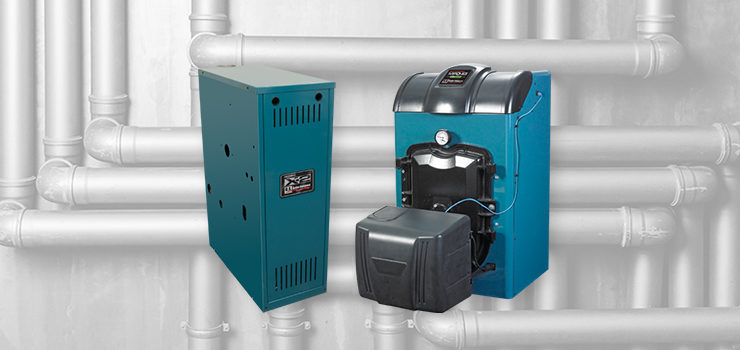By Rick Johnson, Applications Engineer for U.S. Boiler Company
As the condensing boiler market continues to grow, contractors are becoming more familiar with the requirement of primary/secondary piping. They are also starting to understand why and how p/s piping works. There is one reason… protecting the boiler! Condensing boilers have very low water content, which makes flow through the exchanger highly important.
Stainless steel and aluminum boilers are designed to handle low boiler return temperatures. Cast iron, on the other hand, is not well equipped to handle the same cold return water. Furthermore, over time, the resulting condensation will ruin the heat exchanger and flue piping.
I used to have my technicians come to me after an install of a cast iron oil boiler and say, “Look at this combustion test! I have my CO2 at 13 and my flue gas temperature is at 300 degrees!”
“That’s wonderful!” I would say, “now go back in the house and fix it. The numbers look great, but in time the boiler will fail, the flue pipe will rot, and the chimney will be damaged unless its lined.”
The root of the problem
How many times have we walked into a mechanical room and found the flue pipe rotten and brittle? The flue pipe is replaced but the root cause is never addressed. The root cause is condensation. The cast iron boiler is sitting in condensation mode for far too long. This type of boiler will take some time to show you an issue inside the heat exchanger, but the flue pipe deterioration is an early indication you have a problem. This needs to be addressed before the boiler gets compromised and turns into a very expensive replacement.
Let’s talk flow
To have the boiler operate within manufacturer specs, the flow through the boiler must be maintained at a certain flow rate. This rate is normally between 20º and 40º delta T (ΔT). Newer cast iron boilers have much less water in the boiler, and the volume of cold water being returned from the system could be detrimental if all the return water was to go through the boiler. Water at too low a flow will cause thermal stress points in the boiler or start flashing into steam, which will damage heat exchangers in very low water volume boilers. Low flow is not normally a problem with cast iron products, however, it can be more of a problem with other products due to very low water volume and improper attention to minimum flow standards set by the manufacturers. In primary/secondary piping systems, proper flow through the boiler can be controlled with correct circulator sizing. Sizing the circulator for the recommended flow is a must.
To figure out flow, use the formula 1GPM=10,000BTU @ 20°ΔT. For example, if we have a 100k BTU output on the boiler and using the formula above and assuming we are using a 20°ΔT, then we should be sizing our circulator for 10GPM of flow. If we are looking at maximum and minimum flow, then we take the DOE output of the boiler (100k BTU) and divide by 10,000 (10GPM). That is the max flow. Minimum flow would be half that (5GPM) and at a 40°ΔT.
Does this really matter?
Now, with all this being said, you’re asking the question, “Does this really matter on a cast iron boiler?” The answer is unequivocally YES!
Why? Well let’s get into this a little deeper. Let’s take the same 100k BTU boiler we were talking about in previous paragraphs and say it has three zones on this system. Then, let’s say each circulator comes on at the same time and each one of them can push up to 6GPM, but let’s use 4GPM for the example as this is more common. Three circulators pushing 4 GMP each is 12 GPM going through the return side of the boiler. This is too much flow for the boiler to handle at once and will push the boiler into a condensing mode for far too long. Sitting in condensing mode will do damage to the boiler, the flue piping and the chamber area of the boiler. As the condensate runs down the cast iron and saturates the chamber area, the integrity of the material used to make the chamber becomes compromised and can collapse into the burners. If you see this is happening, take a look at your ΔT. I would say it’s a good bet if it’s less than 10°.
We can help the boiler live a long life without the risk of thermal stresses, plus the flue pipe can be dry and have the lifespan it was designed to by piping the boiler primary/secondary and assuring proper minimum and maximum flow rates at the proper ΔT… all the while falling into the manufacturer’s specifications.
Primary/secondary piping…it’s not just for condensing or commercial cast iron boilers anymore!

